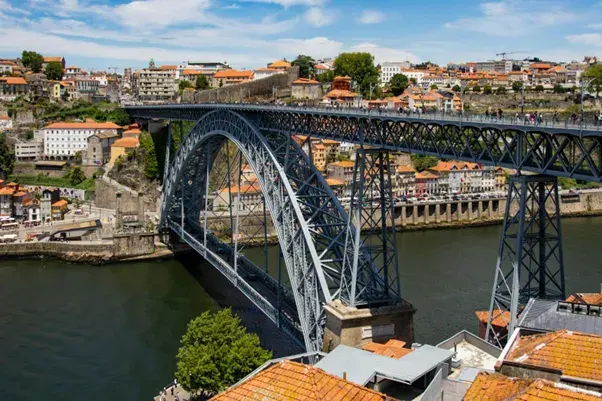
Cycling vs Walking the Portuguese Camino de Santiago
Admin
September 30, 2025
758 words
4 minutes
Cycling the Portuguese Camino De Santiago vs Walking It: Rules, Stamps, Distances & Detours
For many travellers, choosing between walking and cycling the Portuguese Camino De Santiago is the hardest part of planning. Both are rewarding, but the experience is very different. This guide compares the essentials, rules, distances, detours, and logistics, so you can decide whether a bike tour of the Portuguese Camino de Santiago is right for you or whether walking is the better fit.
Rules & Compostela Requirements
Whether you walk or cycle, completing the Camino requires a Credencial (Pilgrim’s Passport) and daily stamps to prove your journey. These stamps can be collected in hostels, churches, cafes, and even tourist offices.
- Cyclists: must complete at least 200 km to qualify for the Compostela certificate. Starting in Porto (around 240 km away) meets this requirement.
- Walkers: need a minimum of 100 km, so Porto is also a valid starting point.
Some travellers worry that starting in Porto may not be far enough, but both walkers and cyclists qualify if they stamp their passport at least once per day (and twice per day in the final 100 km).
Distances, Pace & Timeframes
The way you move shapes your entire Camino experience.
- Walking: Most cover 15–25 km per day. From Porto to Santiago, expect 12–16 days depending on fitness and pace.
- Cycling: Daily distances are usually 45–70 km, meaning you can finish Porto to Santiago in just 6–7 days.
With around two weeks of vacation time, walking often takes up the whole trip. Cycling leaves extra days to rest in Santiago, see more towns, or even extend the journey to Finisterre.
Terrain, Detours & Route Choice
The Camino Portugués splits into two main options:
- Central Route: Leafy countryside, vineyard paths, and historic towns such as Barcelos, Ponte de Lima, and Redondela. Albergues are more plentiful and generally higher quality.
- Coastal Route: Seaside boardwalks, fishing villages, and Atlantic views. But some stretches are sandy, repetitive, or tourist-heavy.
For cyclists, the Central Route is often more practical. The boardwalks of the cycling the Coastal route can be tricky, and Vigo’s industrial suburbs make one section less appealing. Cyclists also need to be prepared for detours around cobblestones, stairs, or steep forest paths. Walkers, on the other hand, benefit from intimate trails that aren’t always practical for bikes.
Accommodation & Camino Community
A big part of the Camino is the people you meet.
- Walking: With more albergues and shorter daily stages, walkers often form Camino “families” and build friendships that carry them to Santiago.
- Cycling: The community is still there, but your faster pace means shorter evenings and fewer repeat encounters with the same pilgrims.
On the Coastal Route, there are fewer pilgrim hostels, and cyclists often need private stays with secure storage. Planning ahead is essential.
Gear, Luggage & Logistics
Bikes & Equipment
A touring or mountain bike is essential for the Camino’s mix of cobbles, gravel, and dirt tracks. Road bikes aren’t suited to the terrain. Proper gearing and wider tyres will make climbs and rough sections easier. Buying a bike in Porto and disposing of it in Santiago can be a hassle, so renting bikes locally is the smarter choice.
Luggage Options
- Walkers: Often carry backpacks but can use luggage transfer services.
- Cyclists: Can choose panniers or take advantage of the same luggage transfer system, travelling light each day.
Which is Right for You?
There’s no single “better” Camino, only the Camino that fits your goals.
- Walking: A slower pace, deeper social bonds, and the pride of completing it on foot. Best if you want full immersion and don’t mind dedicating two weeks or more.
- Cycling: Greater daily distance, flexibility for side trips, and a good option if vacation time is short. Best for those with cycling experience who want variety and speed.
The key is to choose the option that excites you most and matches the time you have available.
Final Thoughts
Both walking and cycling the Portuguese Camino are unforgettable journeys. If you have limited time and love the idea of covering more ground, a Camino de Santiago e-bike or gravel tour can be the perfect solution. If community and slower immersion matter most, walking delivers that in spades. For cyclists, choosing between a guided and self-guided bike tour in Portugal is the final step in tailoring the Camino to your style.
For a stress-free experience, consider booking a bike tour Portuguese Camino de Santiago with Top Bike Tours Portugal. Their support, luggage transfers, and bike rentals make cycling the Camino simple, so you can focus on the adventure. Contact us today to book your cycling adventure in Portugal!